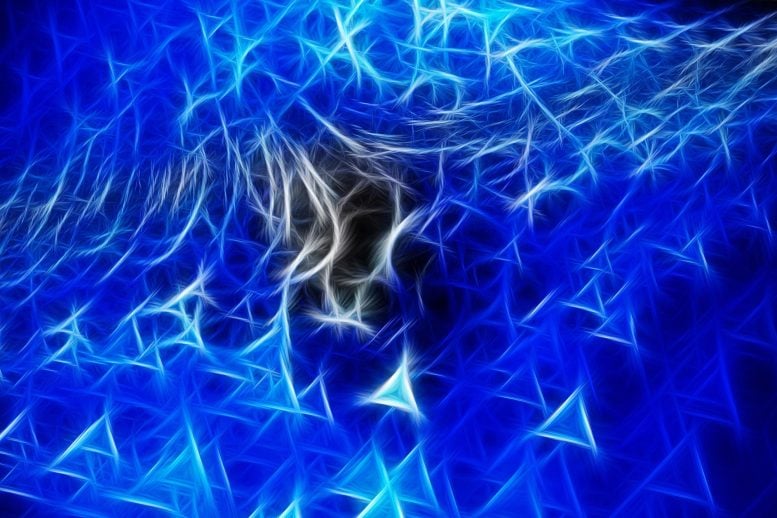
Researchers have successfully altered magnetism in a crystal by applying pressure. This method, which varies the magnetic interactions in a crystal lattice, could revolutionize data storage and quantum computing by controlling geometrical frustration and magnetic properties.
Magnetism is influenced by the behavior of electrons. For instance, these tiny particles can create an electric current using their charge, which in turn can produce a magnetic field. Additionally, magnetism can emerge from the coordinated alignment of magnetic moments, or spins, within a substance. Until now, it has been impossible to continuously alter the kind of magnetism present in a crystal.
An international research team led by TU Wien professor Andrej Pustogow has now succeeded in doing just that: Changing magnetism “by pushing a button”. For that, the team continuously changed the magnetic interactions in a single crystal by applying pressure. The researchers recently published their results in the renowned journal Physical Review Letters.
Magnetism is fascinating
People have been fascinated by magnetism for thousands of years and it has made many technical applications possible in the first place. From compasses and electric motors to generators – these and other devices would not exist without ferromagnetism. While ferromagnetism is already well studied, fundamental research is increasingly interested in other forms of magnetism. These are of particular interest for secure data storage and as potential platforms for quantum computers.
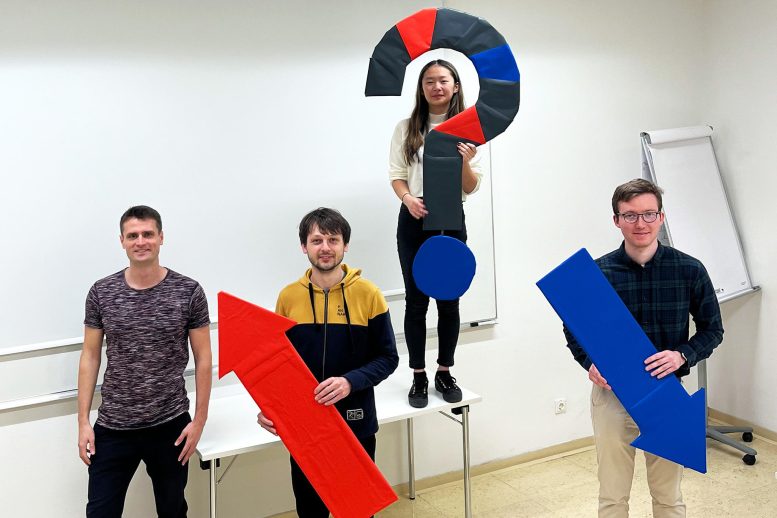
Andrej Pustogow (left), Maximilian Spitaler (right), and colleagues show what magnetic frustration looks like in the triangular grid. Credit: TU Wien
“However, searching for novel forms of magnetism and controlling them fully is an extremely difficult endeavor,” says the study leader Andrej Pustogow.
Ferromagnetism and antiferromagnetism
Spins can be visualized as small compass needles that can align themselves in an external magnetic field and have a magnetic field themselves. In the case of ferromagnetism, which is used in permanent magnets, all electron spins align parallel to each other. In some arrangements of electron spins, for example in ordinary square, checkerboard-type crystal lattices, an anti-parallel alignment of the spins is also possible: neighboring spins always point alternately in opposite directions.
With triangular lattices (or lattices in which triangular structures occur, such as the more complex kagome lattice), a completely antiparallel arrangement is not possible: If two corners of a triangle have opposite spin directions, the remaining side must match one of the two directions. Both options – spin up or spin down – are then exactly equivalent.
“This possibility of multiple identical alternatives is known as ‘geometrical frustration’ and occurs in crystal structures with electron spins arranged in triangular, kagome, or honeycomb lattices,” explains Pustogow. As a result, randomly arranged spin pairs are formed, with some spins not finding a partner at all. “The remaining unpaired magnetic moments could be entangled with each other, manipulated with external magnetic fields and thus used for data storage or computational operations in quantum computers,” says the solid-state physicist Pustogow.
Changed frustration through pressure
“In real materials, we are still far from such a state of ideal frustration. First of all, we need to be able to precisely control the symmetry of the crystal lattice and thus the magnetic properties,” says Andrej Pustogow. Although materials with strong geometrical frustration can already be produced, a continuous change from weak to strong frustration and vice versa has not been possible yet, especially not in one and the same crystal.
In order to change the magnetism in the material investigated “by pushing a button”, the researchers put the crystal under pressure. Starting from a kagome structure, the crystal lattice was deformed by uniaxial stress, which changed the magnetic interactions between the electrons. “We use mechanical pressure to force the system into a preferred magnetic direction. As sometimes in real life, stress reduces frustration because a decision is forced upon us and we don’t have to make it ourselves,” says Andrej Pustogow. The team succeeded in increasing the temperature of the magnetic phase transition by more than ten percent. “This may seem not much at first glance, but if the freezing point of water were increased by ten percent, for example, it would freeze at 27 °C – with serious consequences for the world as we know it,” explains Pustogow.
While in the current case, geometrical frustration was reduced by mechanical pressure, the research team is now targeting an increase in frustration in order to completely eliminate antiferromagnetism and realize a quantum spin liquid as described above. “The possibility of actively controlling geometric frustration through uniaxial mechanical stress opens the door to undreamt-of manipulations of material properties ‘by pushing a button’,” summarises Andrej Pustogow.
Reference: “Controlled Frustration Release on the Kagome Lattice by Uniaxial-Strain Tuning” by Jierong Wang, M. Spitaler, Y.-S. Su, K. M. Zoch, C. Krellner, P. Puphal, S. E. Brown and A. Pustogow, 18 December 2023, Physical Review Letters.
DOI: 10.1103/PhysRevLett.131.256501


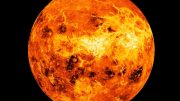
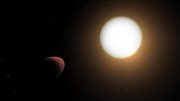
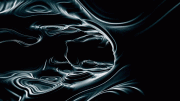
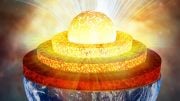

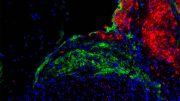
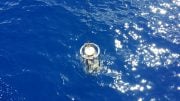
Quantum physics should be renamed as topological vortex physics, which is more practical. Unrealistic naming can easily create more pseudo scientific propositions in pseudo academic publications.
I hope researchers are not fooled by the pseudoscientific theories of the Physical Review Letters (PRL), and hope more people dare to stand up and fight against rampant pseudoscience.
The so-called academic journals (such as Physical Review Letters, Nature, Science, etc.) firmly believe that two objects (such as two sets of cobalt-60) of high-dimensional spacetime rotating in opposite directions can be transformed into two objects that mirror each other, is a typical case of pseudoscience rampant.
If researchers are really interested in Science and Physics, you can browse https://zhuanlan.zhihu.com/p/463666584 and https://zhuanlan.zhihu.com/p/595280873.
The interaction of topological vortices gives humanity infinite possibilities. If you are interested, you can browse https://zhuanlan.zhihu.com/p/569722770 and https://zhuanlan.zhihu.com/p/624024548.
Is this experiment that much different than what is known about kinetic energy created by pressure of crystals, the observation does bring forth what is happening at a quantum level when bringing two forces together as a manipulator, good now can the manipulation be tailored for work. The work might be at the interface exchange.
The pseudo scientist is YOU Zhang. How about more research and less running your mouth about the naming of things…?
I really appreciate your honesty. The contribution of Physics Review Letters (PRL) to science is perfectly reflected in you. Today’s physics is proud to have an honest Dr. like you.
You can go home and do a physics experiment according to the theory of the Physics Review Letters (PRL), having your Dad and Mom rotate in two opposite directions, so that they can transform into two people who are mirror images of each other. At this time, it is up to you to decide how to distinguish between your Dad and Mom.
Blessing you!
Mathematics is the foundation of science. Physics must respect mathematics and the scientificity of mathematical models. The standard model must be based on mathematical models in order to be scientific, convincing, and in line with natural laws.
Any hypothesis or conjecture that distorts mathematics, regardless of who or what institution it comes from, is a pseudoscience.